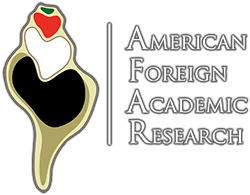AFAR History
The concept of AFAR was hatched in a high school classroom in Northeast Florida. Mat Saunders, fresh off four years of research in Central America convinced the principal to offer an anthropology course. The course was an instant hit. During his lectures, Saunders wove in stories from his fieldwork in Belize, Guatemala, and Mexico, bringing the material to life for his students.
As might be expected, one day a student asked, “Can I excavate at a Maya site?” Saunders reflexively answered with a sardonic quip “Uh, no.” But the idea simmered in the back of his mind. Not long after, Saunders began sketching the framework of a plan to offer qualified students an opportunity to not only visit, but to work firsthand on an actual archaeological site. But two major challenges loomed. First, the cost to not only travel to a site but logistics appropriate for teenagers once they made it there. Second, would the archaeological community be willing to include pre collegiate students in an environment where a careless action could damage fragile artifacts. Saunders was not to be deterred, he called in favors and pleaded with colleagues to assist him in making his dream a reality. And as luck would have it, gradually the pieces began to fall into place.
The first big step came in 2006 when Saunders convinced his mentor, Dr. Jaime Awe, to allow him to bring four students to Belize to participate in the Belize Valley Archaeological Reconnaissance Project. Knowing he was swimming in uncharted waters, Saunders prepared his students to a greater extent than he had received while a college student. That summer, Saunders led his team to Belize for the first time. Their preparation paid off and his students shined among their college level peers. Dr. Awe welcomed Saunders to bring students in the years to come.
“Since 2007, hundreds of students have participated in AFAR research programs.”
With a success under his belt, Saunders began focusing on the financial challenge. Luckily, his paths crossed those of Allen Douglas, a banker and volunteer mentor with a dropout prevention program. Familiar with Belize from a prior vacation, Douglas read a newspaper article on Saunders’ program and asked how he could help.
With Douglas’s financial backing, American Foreign Academic Research incorporated as a 501(c)3 non-profit in 2007. This launched the development of the organization and paved the way for the launch of a fundraising campaign to support qualified students lacking the financial means to participate otherwise. Every year since, Saunders and a select group of high school students have traveled to Belize and worked onsite at the Maya site of Cahal Pech. Since 2007, hundreds of students have participated in AFAR research programs.
In addition to organizing archaeological excavations, AFAR ventured into the arena of public education and outreach. Starting in 2007, AFAR began hosting the Maya at the Playa Conference, a conference that brings together dynamic leaders in the field of Maya archaeology and culture as well as rising stars in the field including students and enthusiasts from the public. Over the years thousands of participants have received an insider’s view of the research of hundreds of scholars in a casual and personal environment. In 2011, the conference series expanded with the addition of the Maya at the Lago Conference, which was hosted on the campus of Davidson Day School. Like the Maya at the Playa, Maya at the Lago offered participants and scholars an opportunity to share knowledge and laughs in a relaxed environment.
And the work continues. In 2014, AFAR began operations in Spain at the medieval castle of Zorita. In 2017, AFAR commenced work at the early ancient Macedonian site of Mieza in Greece, and in 2018, we began our investigations of the Roman fish processing capital of Tróia on the Atlantic coast of Portugal. In 2020, AFAR launched The Mayanist, which is an open-access peer-reviewed academic journal which continues to be produced twice a year. And we are not done yet. New sites, new programs, and new opportunities are just around the corner.

